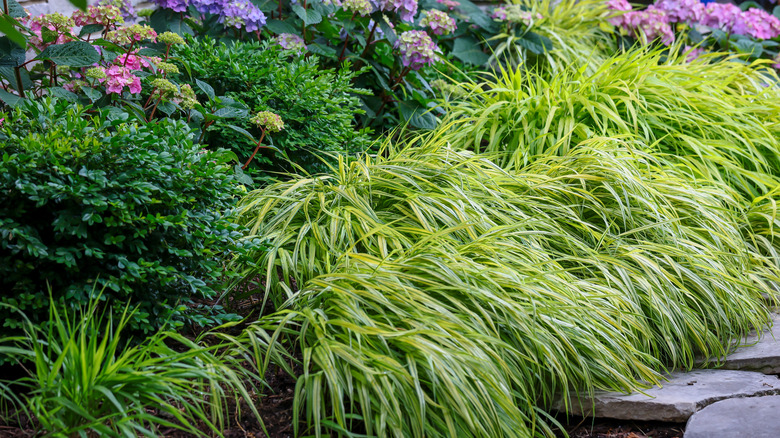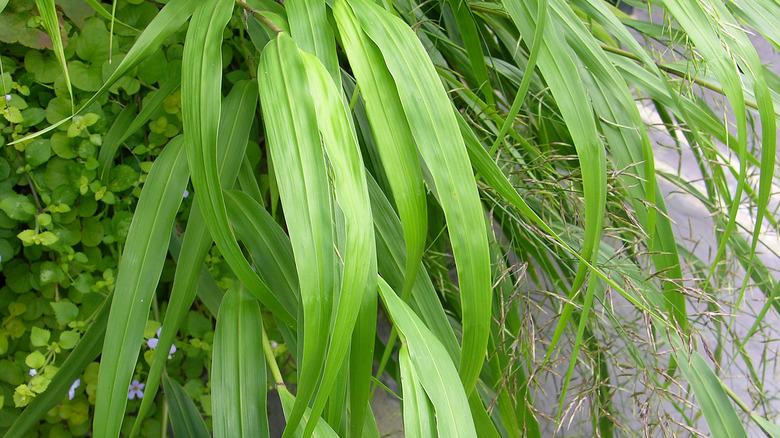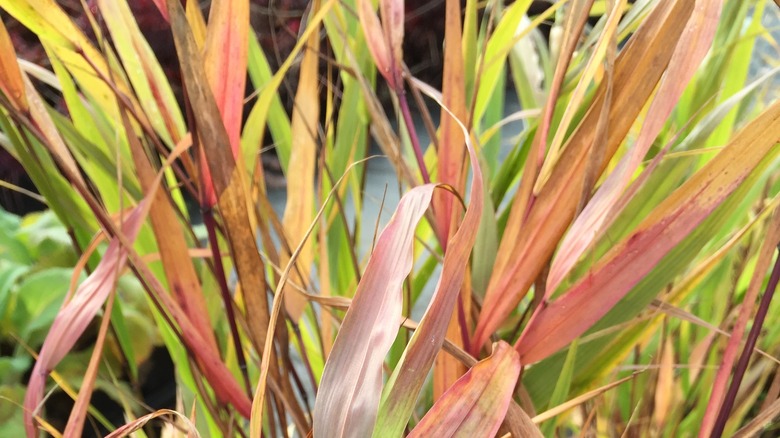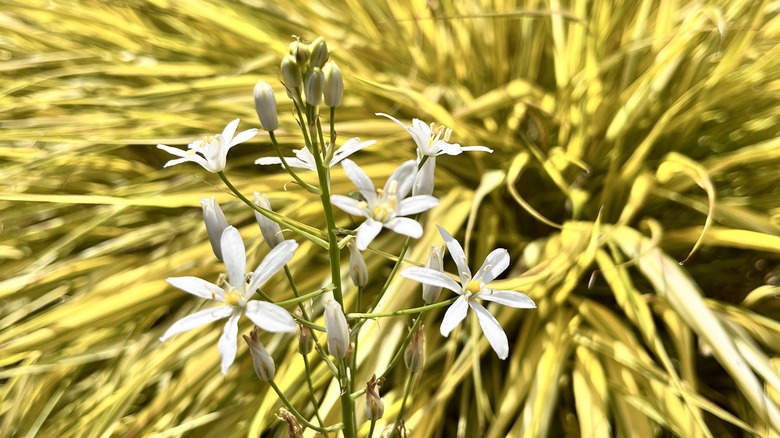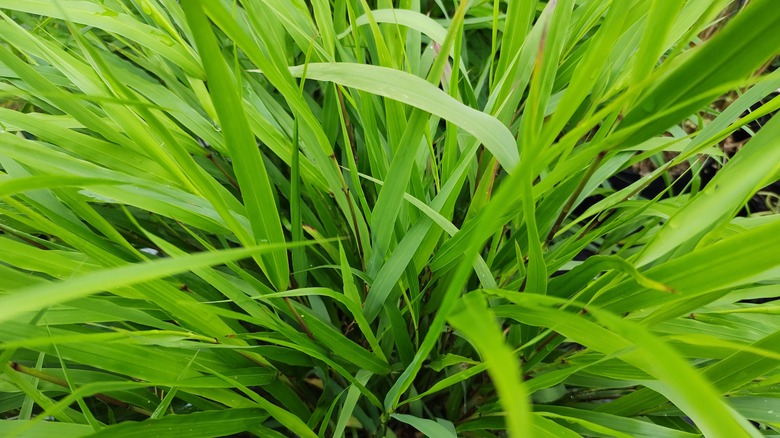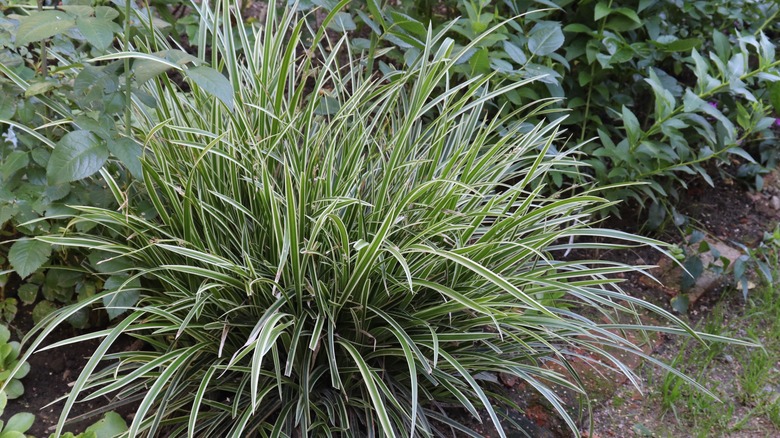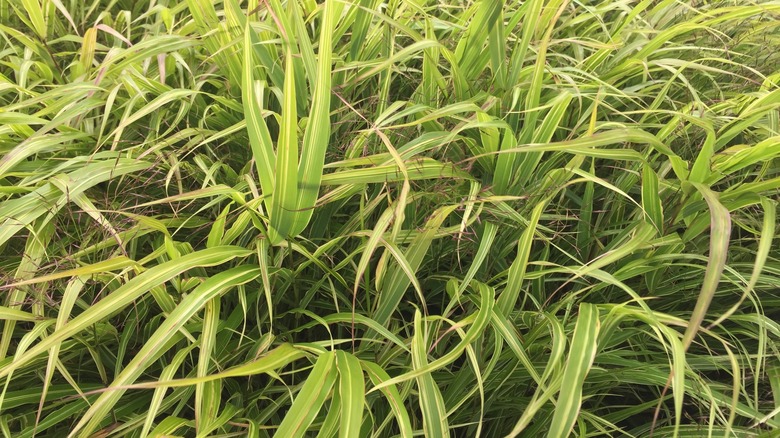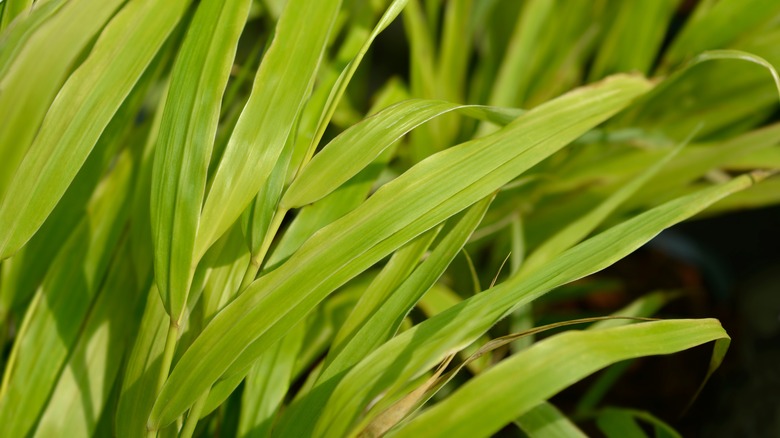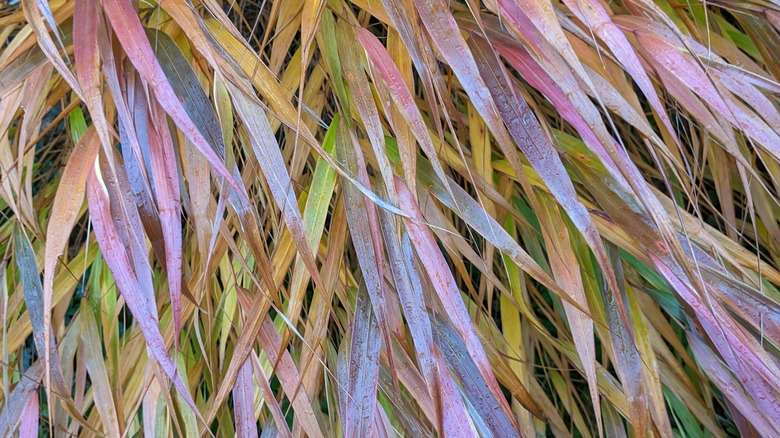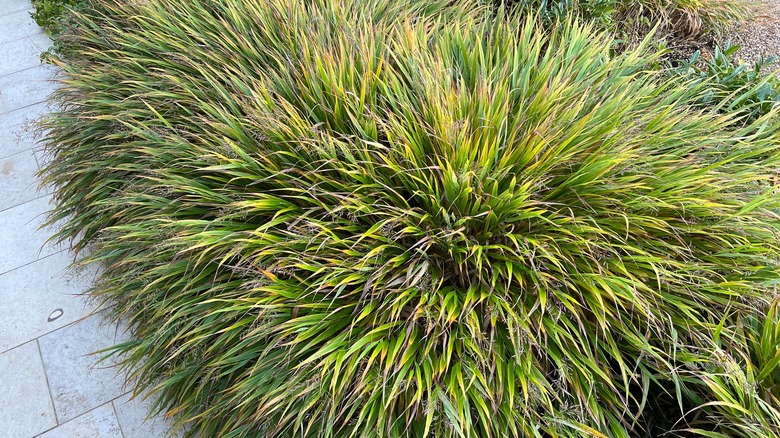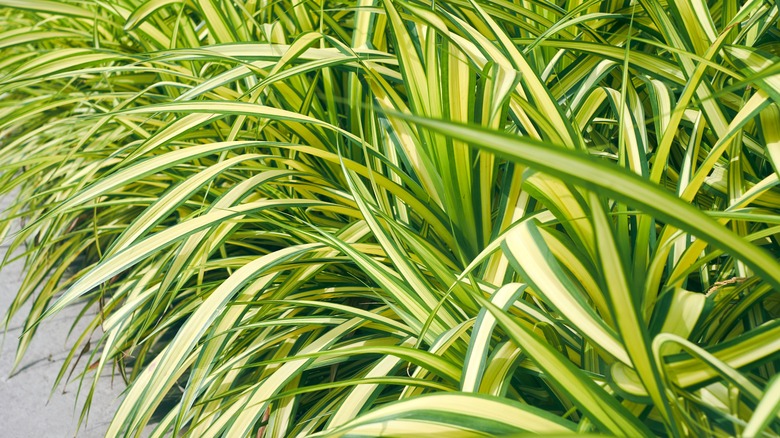10 Japanese Forest Grass Varieties You Should Plant For Beauty & Texture
Looking for unique ways to beautify your garden? Ornamental grasses can fill those empty spaces around your flower beds with dynamic shapes and intriguing color palettes. Hakonechloa macra, more commonly known as Hakone grass or Japanese forest grass, is native to the mountainous regions of Japan. The bamboo-like stems grow in elegant cascades that dance in the breeze and change color throughout the seasons. There are many exquisite varieties of Japanese forest grass, each with its own distinctive features. For example, Aureola has won awards for its beauty, Naomi turns plum-colored in the fall, and Sunflare develops orange and crimson streaks over time.
Japanese forest grass is one of the best ornamental grasses to add to your landscape for many reasons. It is low maintenance, slow to spread, and thrives in areas with plenty of shade. Plus, it is a deer-resistant plant that is practically immune to pests and diseases. Japanese forest grass is typically grown along the edges of walkways and in containers but also looks beautiful around water features and ponds or flowing gracefully over rock walls. If you're feeling inspired to add beautiful Hakone grass to your landscaping, take a look at these gorgeous varieties that will infuse your backyard with enchanting allure.
All Gold
This Japanese forest grass variety gets its name from its gold-like color, which is especially beautiful in summertime sunlight. In the fall, the grass transforms into a rich red-tan hue. The stems are almost bamboo-like in appearance. They arch gracefully as they grow and can reach up to 14 inches in height. This grass grows well in USDA plant hardiness zones 5 to 9. Plant Hakonechloa all gold in your garden along pathways and in containers to add texture and dimension to your outdoor space.
Beni Kaze
Lush and multicolored, Beni Kaze Japanese forest grass will undoubtedly make a statement in your garden oasis from season to season. Witness the grasses turn from vibrant green in the early summer to red-streaked in the late summer and finally to deep red, gold, and orange into the fall; a stunning kaleidoscope in your backyard. Beni Kaze grass looks beautiful along walkways and sways beautifully in the breeze. The stems can reach soaring heights of 18 to 24 inches and grow optimally in areas with full sun and partial shade.
Aureola
Aureola is a plant that has received many accolades. The color-changing leaves of the Aureola Japanese forest grass will infuse your garden with beauty. The alluring green and gold grasses turn different colors throughout the seasons. Hakonechloa macra Aureola thrives in a variety of climates and requires little maintenance. It also deters pests and diseases. For all of these reasons, Aureloa was named the Perennial Plant of the Year in 2009 by the Perennial Plant Association. It also received the Award of Garden Merit from the Royal Horticulture Society.
Nicolas
This flowering variety of Japanese forest grass adds visual intrigue to any outdoor space. Similarly to other types, Nicolas grass grows in cascading green-colored bunches in the summer and transforms into a showcase of orange and gold in the autumn months. The plant also produces yellow and green flowers, which begin to bloom in the middle of summer. It grows most optimally in hardiness zones 5 to 9, in well-draining, moist soil, and with plenty of available shade. Full sun exposure will likely damage the leaves over time.
Carex Ice Dance
This variety of Japanese sedge is very similar to forest grass. It will add a burst of color and texture to your shaded backyard areas. The leaves are a rich contrast of bright emerald green and crisp white. Look closely during the plant's peak blooming season, and you will spot small cream-colored flowers. It is a slow-spreading plant with leaves that grow 12 to 16 inches tall. It thrives in USDA plant hardiness zones 5 to 9 and will respond well to partial sun in cooler climates. It is an excellent choice for ground cover and along walking paths.
Albostriata
Similarly to Carex Ice Dance, Albostriata is a shade-loving Japanese forest grass that is characterized by its alluring green and white colored stems. The plant's bamboo-like appearance makes it an eye-catching fixture in the garden, and it can grow up to 6 feet tall. Enjoy the serene view of the cascading leaves swaying gracefully in the breeze. Albostriata grows optimally in moist soil that is well-draining and in partial or full shade. The stems and their tiny green flowers look beautiful along edges, in containers, and as ornamental additions to your seasonal flower bouquets. Plus, it is relatively easy to care for.
Sunflare
Sunflare is a vibrant Japanese forest grass species that creates variety and depth of color in any outdoor space. The dense leaves cascade in golden, green, orange, and burgundy hues that transform over the years. As the plant exceeds two years of age, it begins to develop striking red streaks. Sunflare truly lives up to its name, as the various colors begin to resemble dazzling rays of light from the sun. This plant thrives in shady areas with patches of partial sunlight, USDA zones 5-9, and can reach 18 inches tall. It looks especially lovely around ponds and along walkways.
Naomi
This elegant variety of Japanese forest grass puts on a show-stopping spectacle in the cooler months when its green leaves transform into brilliant shades of plum purple and burnt crimson with streaks of chartreuse. Smaller than other species of Hakonechloa macra, Naomi is an excellent choice to enhance the autumn colors in your backyard. Just imagine wrapping up in a cozy blanket and enjoying the view of these beautiful leaves dancing in the fall breeze. The arching stems can be arranged to cascade over rocks and edges in your garden. It enjoys partial to full shade and grows to 18 inches tall.
Sunny Delight
With tall and majestic leaves colored in shades of dark green and brilliant gold, Sunny Delight truly is a delight. It is among the most beautiful Japanese forest grass varieties, with striped multicolored stems that grow up to 14 inches and form tan-colored flowers as summer turns into autumn. The variegated pattern of Sunny Delight is actually similar to the award-winning Aureola but in reverse. The graceful stems grow in different widths and flow in gorgeous waterfall-like cascades. As with other Japanese forest grasses, Sunny Delight requires nutrient-rich soil and plenty of shade for it to thrive.
Carex Evergold
Another variety of Japanese sedge, Carex Evergold, is a stunning ornamental plant that captures the eye. It is characterized by its cream-yellow leaves with bold dark green stripes along the edges. Arrange it along walkways or, if you are an artistically inclined gardener, plant it in areas where its 12-inch blades can cascade over natural rock or containers. In areas with mild climates, Carex Evergold will preserve its vibrant color throughout the year. It can withstand abundant sunshine and a variety of weather conditions in plant hardiness zones 6 to 9, including drought.
